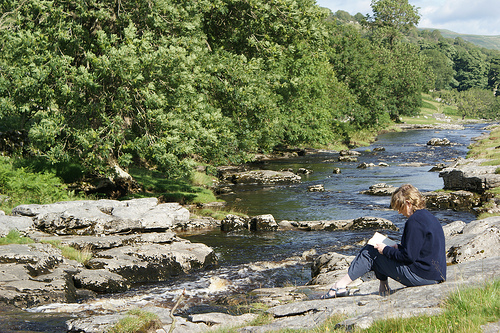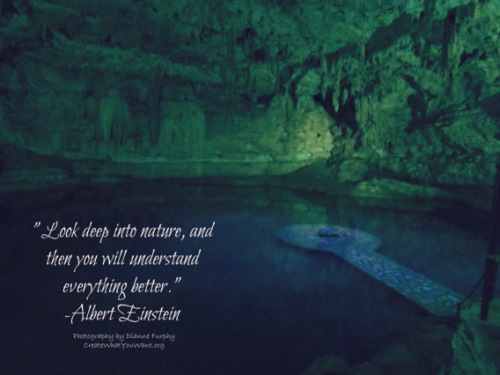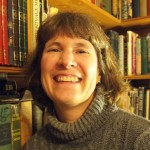Editor’s Note by Martha Nichols
Why I Love and Hate Nature Writing
In my twenties, I backpacked the Mono Pass Trail in the Eastern Sierras of California. While the dramatic mountain landscape remains in my bones, what I remember most is reading Zora Neale Hurston’s Their Eyes Were Watching God.
Sitting beside a glacially fed stream, I rubbed my sore shoulders and inhaled string cheese. But the paperback propped on my knees had all my attention, as I read Hurston’s description of a rabid dog during a Florida hurricane. Her protagonist Janie gets dragged into the rushing water, trying to swim amid “things that didn’t belong”:
Janie achieved the tail of the cow and lifted her head up along the cow’s rump, as far as she could above the water. The cow sunk a little with the added load and thrashed a moment in terror. Thought she was being pulled down by a gator. Then she continued on. The dog stood up and growled like a lion, stiff-standing hackles, stiff muscles, teeth uncovered as he lashed up his fury for the charge.
When Janie’s husband gets bitten by the dog, he shrugs it off. But a good half century after the setting of that fictional crisis, as I sweated my way among dry boulders and high-desert peaks, I felt a premonitory chill about the story’s next turn. That’s because I’d rather read a book than bushwhack through anything, especially a swamp. As a child, I wanted to be a zoologist, mostly because I loved The Golden Treasury of Natural History. But I soon realized the colorful illustrations were what enthralled me—not to mention the attempt to organize the entire "Earth itself and the sun, stars, and planets that surround it” between two cardboard covers.
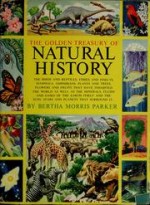 Then, as now, I needed to connect my inner and outer worlds with words. And therein lies my trouble with nature writing. This loosely defined genre includes some of my very favorite books, but it can also raise my hackles as surely as those of Hurston’s dog.
Then, as now, I needed to connect my inner and outer worlds with words. And therein lies my trouble with nature writing. This loosely defined genre includes some of my very favorite books, but it can also raise my hackles as surely as those of Hurston’s dog.
For starters, I bristle at the notion that creative people feel the deepest connections to nature. I’m a big fan of birds and trees and lakes, but I like art museums and libraries, too. My insomniac nights of sleeping rough are over. I’m happy to mentally recreate somebody else’s adventures in the rainforest—say, Redmond O’Hanlon’s 1984 Into the Heart of Borneo—or the Alaskan bush of Jon Krakauer’s 1996 Into the Wild.
Many writers revel in camping and communing with the great outdoors. I bet lots of others prefer watching the sun set on a summer evening from a screened porch, as I do. You don’t need to love living in the wild to be a good nature writer.
In fact, “loving nature” or feeling awed by it can be a literary handicap. Too often, creative nonfiction or essays tagged with the nature label are syrupy, pompous, or a cover for biases about what’s “hardwired.” Their emotional temperature is tepid, as if their authors are stuck in a spiritual trance, content with cataloging leaves and seashells.
Have I mentioned that I can’t stand “wonder” and “nature” in the same sentence?
Yet, the very best of the genre, like all creative work, addresses what it means to be alive. It’s funny, bitter, despairing, raw. It’s about our inner landscapes as much as the wild things we celebrate—and the wildness expressed by writers is what matters most to me.
“Deep Into Nature,” the title of TW’s Spring 2013 issue, comes from a quote by Albert Einstein: Look deep, deep into nature, and then you will understand everything better.
If you Google this quote, it pops up all over blogs and on posters by various artists. But it’s far harder to track down where and when Einstein originally said it. The quote appears in this form in the 2005 New Quotable Einstein, where editor Alice Calaprice attributes it to a 1951 letter he wrote to his stepdaughter Margot Einstein, after the death of his sister. Einstein himself died in 1955.
Knowing the context takes his moving words beyond a green slogan, just as the unusual nature pieces in this TW issue are grounded in specific times and places. For instance, in “Green Among the Bones,” Marc Schiffman makes unlikely connections between Cambodia’s killing fields and the natural world.
Douglas Canter’s “The Petrel” combines a science writer’s eye for detail with a look at his own midlife dissatisfactions. Meanwhile, Kathryn Winograd’s “A Poet in the Biosphere” generates a lyric fever with her cascade of owls, lichen, and caterpillars.
This issue also includes a spotlight on bookstores called “The Last Bookstore on Earth.” Writers often rhapsodize about bookstores in the same way they do about nature—and shelves lined with books may be the most natural habitat for literary creatures. “Time in a bookstore is time stopped,” writes Lisa Solod in her essay “Playing God—With Books,” just as another author might say of a walk in the woods.
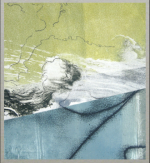 In other ways, the three image essays in the Spring 2013 TW explore the question of imaginary worlds vs. reality. Mary Dineen’s nature photographs appear to capture an object itself, without words. Yet, Cynthia Staples’s photos of stones and water are interwoven with the highly personal story she tells. Susan Denniston’s “reconstructions” of her own images of a seawall are a riff on Hokusai’s iconic “36 Views of Mount Fuji.” In one of the interviews in this issue, TW editor Lorraine Berry asks author Terry Tempest Williams if there’s any kind of nature writing she doesn’t like. The well-known nature writer, memoirist, and environmental advocate answers:
In other ways, the three image essays in the Spring 2013 TW explore the question of imaginary worlds vs. reality. Mary Dineen’s nature photographs appear to capture an object itself, without words. Yet, Cynthia Staples’s photos of stones and water are interwoven with the highly personal story she tells. Susan Denniston’s “reconstructions” of her own images of a seawall are a riff on Hokusai’s iconic “36 Views of Mount Fuji.” In one of the interviews in this issue, TW editor Lorraine Berry asks author Terry Tempest Williams if there’s any kind of nature writing she doesn’t like. The well-known nature writer, memoirist, and environmental advocate answers:
I am not sure what ‘nature writing’ is…. Is The Old Man and the Sea by Ernest Hemingway nature writing? Is The Grapes of Wrath by Steinbeck? What about Death Comes for the Archbishop by Willa Cather? All three of these novels are place-based works of literature with the ocean, the dustbowl of the Depression, and the American Southwest as primary characters…. Was Emily Dickinson a nature poet? One could call Jonathan Franzen’s novel Freedom nature writing as it turns on the character of a cerulean warbler.
You could ask the same question of Their Eyes Were Watching God—or any novel that involves a character looking out a window. The natural world provides a wealth of detail and metaphor, but, as Terry Tempest Williams makes clear, labeling anything “nature writing” reduces everything the term encompasses.
Nature is not the only spur to the artistic imagination, either. We writers nurture our inner natures however we can in order to convey reality as we see it. In a hurried and ever more virtual world, the transcendent feeling of time stopped, of looking deep—whether in a bookstore or on a beach—may be the most endangered experience of all.
Table of Contents for TW Spring 2013
Publishing Information
- Their Eyes Were Watching God by Zora Neale Hurston, originally published by J.P. Lippincott in 1937 (University of Illinois Press, 1978).
- The Golden Treasury of Natural History by Bertha Morris Parker and multiple artists, originally published in 1952 (Golden Press, 1962).
- The New Quotable Einstein, edited by Alice Calaprice (Princeton University Press, 2005).
- The Ultimate Quotable Einstein, edited by Alice Calaprice (Princeton University Press, 2011). Here, Calaprice runs a slightly different version of the quote—“Look into nature, and then you will understand it better”—based on a 1955 letter written by Margot Einstein.
Art Information
- Woman Reading by Stream (untitled) © Andrew Michaels; Creative Commons license.
- "Look Deep Into Nature" (2011, Mexico, natural cave) © Dianne Furphy; used by permission.
- "36 Views of a Seawall" (detail) © Susan Denniston; used by permission.
Martha Nichols is editor in chief of Talking Writing.
She is not a nature writer—except when she is. After reading Cheryl Strayed’s account of flinging away a hiking boot in Wild, Martha laughed. She calls her own boots “instruments of torture.” On an ill-fated Yellowstone trip, her sleeping bag got soaked in a hot spring. On yet another camping expedition, she woke in the moonlight to see a chipmunk dragging away her sandal.
Martha thanks her faculty aide Mary Ortega-Kelby, staffers at Cal Tech’s Einstein Papers Project, and researcher Barbara Wolff of the Albert Einstein Archives at Hebrew University for help with tracking down the provenance of the Einstein quote.

